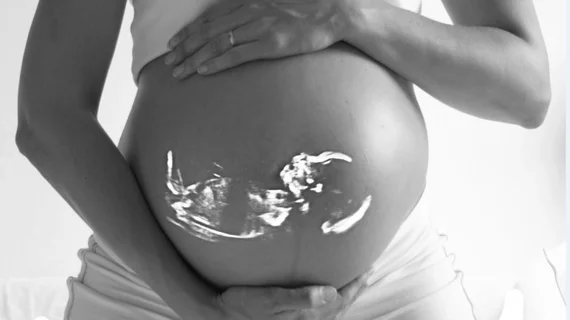Ultrasound assessments before vaginal deliveries could help predict the degree of difficulty women will experience during childbirth.
Having a detailed understanding of fetal head position before childbirth enables women and their medical team to make important decisions on delivery methods. This is commonly done via digital examination, but the authors of new research published in the Journal of Gynecology Obstetrics and Human Reproduction note that many studies have reported as much as 20%-70% variability with the method.
“An error in assessing head position may result in inappropriate vacuum or forceps placement, increasing the potential for fetal injury and the failure rate of the procedure,” corresponding author A. Plurien, from the department of obstetrics at Lille University Hospital in Lille, France, and co-authors explained.
Ultrasound assessments of fetal head position and station have been used to predict delivery mode, but never delivery difficulty, which is of equal importance, the authors suggest. In addition to fetal head position, head perineum distance (HPD) measurements are also of interest in predicting delivery difficulty. Ultrasound offers good visualization of both metrics.
For their research, experts retrospectively compared the utility of ultrasound versus digital examination for predicting delivery difficulty by analyzing 286 operative vaginal deliveries (OVD). They measured the degree of difficulty based on birth attendant reports, use of vacuum devices, instrument changes and whether the delivery was completed by cesarean due to OVD failure.
Of the 286 OVDs, 65 were considered difficult. When assessing difficulty using fetal position as an indicator, the area under the curve (AUC) for digital examination was .62, compared to .66 when ultrasound was used. Ultrasound was just slightly better than digital examination when HPD measurements were used to predict difficulty, though not significantly.
Specifically, HPD with a threshold of 37 mm (without compression of soft tissue) and 17 mm (with compression) was indicative of delivery difficulty, as well as the ultrasound assessments of transverse and posterior positions.
“Ultrasound assessment before OVD represents an important tool in a delivery room,” the experts noted. “However, further studies are mandatory to better handle this crucial tool and to better define its specific indications and different thresholds.”
More on ultrasound imaging:
Ultrasound images reveal how smoking before conceiving impacts embryonic development
Multimodal AI platform can accurately diagnose and stage thyroid cancer via ultrasound images
Specialized ultrasound can accurately detect prostate cancer, new research shows
Signs of autism can be spotted on routine prenatal ultrasound, research shows

